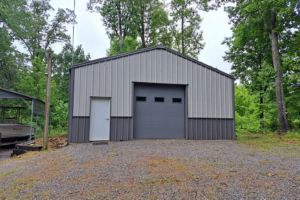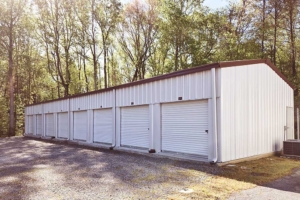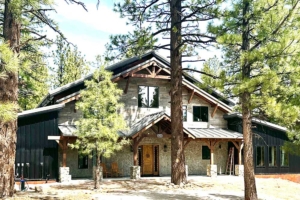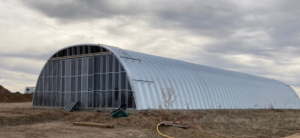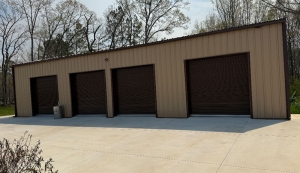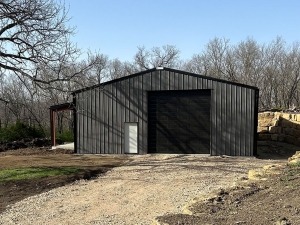Airplane Hangars
August 4, 2023 | Aircraft Hangars
A hangar is an enclosed space that is used to store and protect aircraft, usually located in a commercial aviation facility. Hangars are typically large, steel-framed structures with walls made of metal and large doors that open up for easy access.
If you require a place to store or repair your aircraft, an airplane hangar can provide the secure space you need. However, it’s crucial that you choose the right hangar for your aircraft, meaning that it meets your specific needs, is available with the features you want, and is cost-effective to boot
Sunward Steel Buildings offers pre-engineered metal airplane hangar building kits that can be customized to your specifications. The following is a quick overview of airplane hangars and why you should consider a pre-engineered airplane hangar building kit from Sunward Steel Buildings.
Common Types Of Aircraft Hangars
Not all aircraft hangars are the same. There are two primary types of aircraft hangars designed for different aircraft types and are typically classified according to their dimensions.
T-Hangars
T-hangars are the most common type of aircraft hangars. They are typically long, rectangular metal buildings with a single door designed to fit the width of an airplane’s wingspan. The T-hanger design allows for easy access and efficient storage of smaller planes, such as propeller-driven airplanes and helicopters.
Box Hangars
Box hangars are larger and more spacious than T-hangars. These structures are designed for storing multiple aircraft at the same time in addition to accommodating larger planes like jets.
Common Materials Used For Aircraft Hangars
When it comes to aircraft hangers, there are many materials that can be used for their construction. However, it’s worth noting that some are definitely better than others. With that in mind, the following are the most common materials used for building aircraft hangars:
Metal
Metal is a very commonly used material for aircraft hangar construction. Metal is a durable and cost-effective material, making it an excellent choice for hangar construction. It’s also resistant to damage caused by fire, termites, mold, mildew, and rot and can withstand wear and tear that’s caused by long-term exposure to the elements.
Furthermore, metal is a recyclable material, so it is an eco-friendly option.
Steel
Steel is often used interchangeably with metal, but there is a key difference between steel and metal. Although steel can be considered a type of metal it’s an alloy of iron and carbon, whereas metal does not have to contain any iron.
Steel is a popular material for aircraft hangers because it is strong, lightweight, and cost-effective. Compared to metal, steel is more corrosion-resistant and can provide better insulation, making it ideal for aircraft hangar construction.
Aluminum
Aluminum is another type of metal that can be used for aircraft hangar construction. It is the most commonly found metal on earth and is less dense than other metals, like steel. As a result, aluminum is lighter and more cost-effective, making it an excellent choice for aircraft hangar construction.
Additionally, aluminum is extremely corrosion-resistant, so it will remain durable even after prolonged exposure to the elements.
Concrete
Concrete is a composite material and is made from cement, water, and aggregates. It is commonly used for the construction of aircraft hangars because it is incredibly durable and cost-effective.
Additionally, concrete is relatively easy to work with and can be customized in various ways. However, it’s not without its drawbacks. Concrete is very porous, which means it can be susceptible to water damage if it’s not properly sealed. Additionally, it’s much more challenging to maintain and repair than other materials.
Wood
Wood is a natural and timeless material used in the early days of aircraft hangar construction. It’s an excellent insulator and can be customized to fit any space or design. However, wood isn’t nearly as durable as metal or steel, so it may need to be repaired or replaced more often.
Additionally, wood is prone to rot and insect damage, making it less ideal for long-term use. Not to mention, it’s highly vulnerable to fire damage, which could be a severe safety hazard for any aircraft hangar.
Why Pre-Engineered Steel Aircraft Hangars Are More Superior
Pre-engineered steel aircraft hangars have become increasingly popular due to their numerous advantages. Pre-engineered steel aircraft hangars are less expensive than traditional structures and can be built much faster. This is because the components are prefabricated, meaning the construction process is much more streamlined and efficient.
Also, unlike traditional aircraft hangars built from the ground up on-site, pre-engineered steel aircraft hangars can be assembled in just a fraction of the time.
In addition to being less expensive and quicker to build, pre-engineered steel aircraft hangars are also much more durable than traditional structures. Steel is strong and resilient, and it won’t rot over time, making it an ideal choice for aircraft hangar construction.
Furthermore, steel is a recyclable material, so it’s an eco-friendly option. In comparison to traditional hangars, pre-engineered steel aircraft hangars can be expected to last much longer and require less maintenance over time.
Finally, a pre-engineered steel aircraft hangar can be designed and engineered to meet your unique requirements and can be further customized with various features to meet your needs.
Common Hangar Sizes
It should be mentioned that steel is the ideal material for aircraft hangars because hangars can be engineered using an open, clear-span design, meaning that the hangar can be designed without any internal support beams or columns obstructing the interior.
This type of design is extremely advantageous for aircraft hangars because it provides ample space for aircraft of various sizes. That being said, the size of your hangar can be customized to your specifications. The most common hangar sizes include the following:
- 42×40
- 50×60
- 60×60
- 80×80
Hangar Door Customization Options
The doors you choose for your airplane hangar are essential to its overall function. The doors have to be easy to operate and provide plenty of space for your aircraft to move in and out of your hangar.
Additionally, your hangar doors should be durable enough to withstand the elements and provide a good seal against drafts or water intrusion. Keeping this in mind, the following are the hangar door customization options that we offer at Sunward Steel Buildings:
- Bi-Fold Doors: Bi-fold doors have multiple panels that fold up along a track. They provide easy access to the hangar while maintaining a tight seal against the elements. These kinds of doors are ideal for large aircraft hangars and can be customized to fit any size opening.
- Sliding Doors: Sliding doors comprise one large panel that slides open along a track. Sliding doors are easy to operate and provide plenty of space for your aircraft to move in and out of the hangar.
- Curtain Stacking Doors: Curtain stacking doors are composed of multiple overlapping panels that stack up along a track. They provide easy access to the hangar and can be customized to fit any size opening.
- Hydraulic Doors: Hydraulic doors consist of one large panel raised and lowered using a hydraulic lift system. They provide ample space for your aircraft to move in and out of the hangar while providing a tight seal against the elements.
Featured Aviation Buildings
At Sunward Steel Buildings, we have engineered and manufactured a variety of pre-engineered steel aircraft hangars for both commercial and private aircraft. Here are some of our featured projects:
Provide proper protection for your aircraft with Sunward Steel. Request for a quote to get your prefab building needs.


